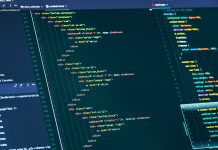With the support of low-code technology, local councils can easily improve citizen engagement and cost-effectively protect their health and environment
These days, local governments and councils are under more pressure than ever to keep up with the growing needs of their citizens.
From environmental issues such as improving air quality, to supporting vulnerable people during times of crisis, local authorities have a responsibility to protect and maintain the health and wellbeing of not only people, but also the environment.
As a result, these authorities are increasingly turning to technology, and in particular low-code technology, to tackle issues quickly and cost-effectively, whilst putting emphasis on user experience.
Westmorland and Furness Council: Embracing innovation
A recent example of a council embracing innovation is Westmorland and Furness Council. Together with the support of low-code technology, the council has developed a new digital tool, VIPER, which enables the council to quickly identify vulnerable households during a crisis, helping emergency responders to prioritise those most at risk.
The tool has been rolled out to Cumbria Local Resilience Forum members and has been recognised by central government, resulting in the project being awarded funding of £139K as part of Local Digital funding.
This will see the digital tool scaled up significantly, allowing other authorities across the country to take advantage of its benefits.
Newcastle City Council’s low-code technology strategy
Other councils such as Newcastle City Council are also embracing low-code technology to tackle air pollution, the most prominent environmental threat to the well-being of the general public, according to Public Health England.
Exposure to pollutants like fine particulate matter and nitrogen dioxide can lead to respiratory diseases, cardiovascular issues, and other chronic conditions. These health problems not only diminish the quality of life for individuals but also place a burden on healthcare systems as well as the environmental implications contributing to climate change, degrading ecosystems and harming biodiversity.
In an effort to improve air quality, Newcastle City Council developed the Clean Air Zone (CAZ) digital solution. Covering Newcastle city centre, Tyne, Swing, High Level, and Redheugh Bridges, the solution aims to reduce the number of high-polluting vehicles.
With the launch of the CAZ, owners of specific vehicles, which didn’t meet national CAZ emissions requirements, needed a simple way to check eligibility and apply for grants.
In a bid to make community grants more accessible to its citizens, Newcastle City Council developed a digital-first case management solution that could bridge multiple technologies, automate processes, and deliver accurate reporting for compliance.
Automating workflows and improving communication and compliance
Harnessing the power of a low-code platform, the council was able to easily automate workflows and improve communication and compliance.
The new solution meant that they could make quick and easy updates to meet changing grant application needs, whilst overseeing complex applications such as multiple vehicle grants for a fleet, at speed and in greater volume.
Collectively, these initiatives demonstrate the potential of technology and collaborative efforts in tackling the challenges posed by both poor air quality and crisis management, which we are seeing a growing need for.
By prioritising the wellbeing of individuals, and the preservation of the environment, we can strive to create a cleaner, healthier, and safer world for all. Continued investment in innovative solutions and the adoption of responsible practices will play a pivotal role in shaping a brighter future for our communities.
By Mark Gannon, Director of Client Solutions, Public Sector at Netcall
Editor's Recommended Articles
-
Must Read >> How will low-code tech shape the future?















